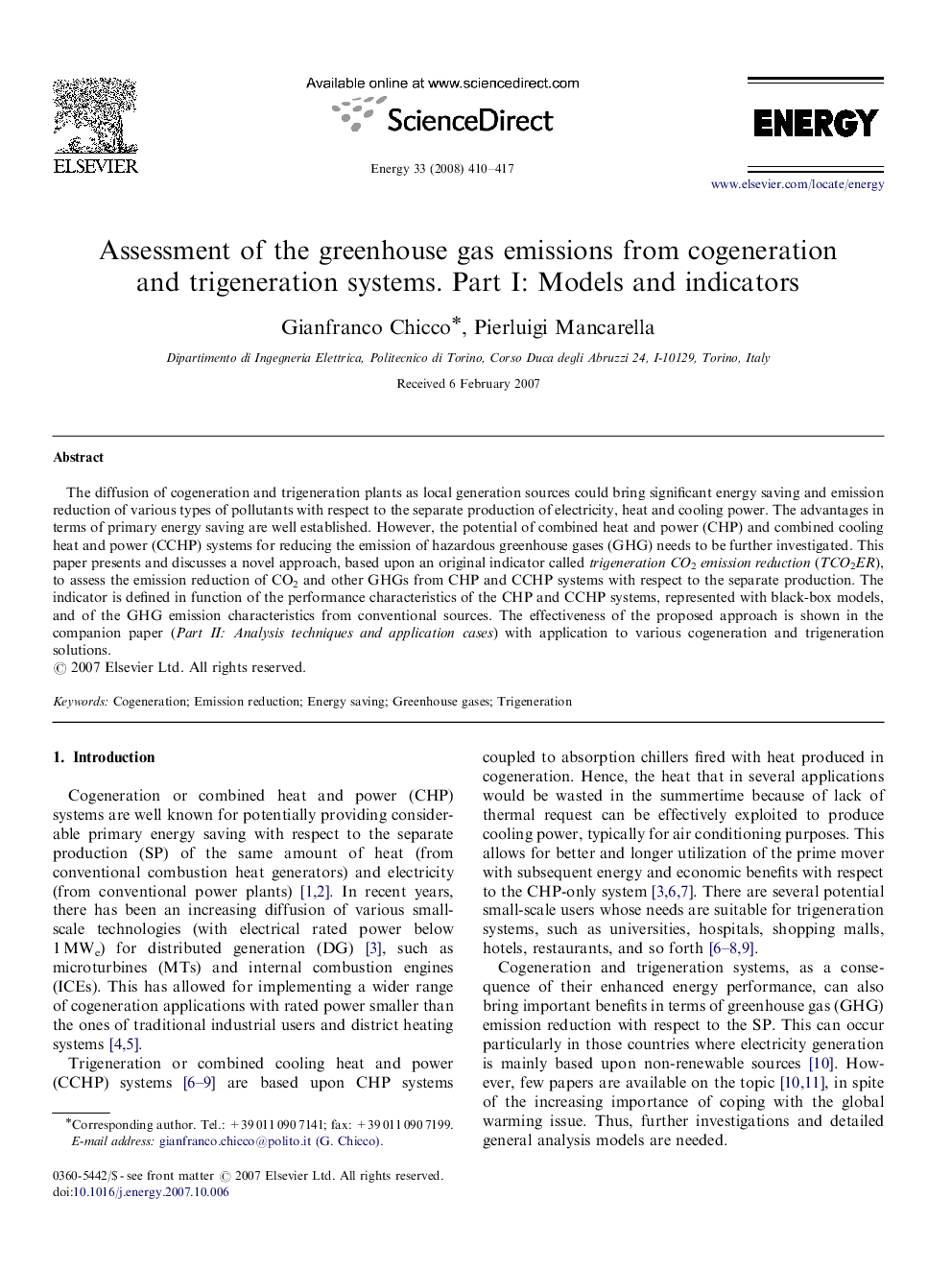| Article ID | Journal | Published Year | Pages | File Type |
|---|---|---|---|---|
| 1735494 | Energy | 2008 | 8 Pages |
The diffusion of cogeneration and trigeneration plants as local generation sources could bring significant energy saving and emission reduction of various types of pollutants with respect to the separate production of electricity, heat and cooling power. The advantages in terms of primary energy saving are well established. However, the potential of combined heat and power (CHP) and combined cooling heat and power (CCHP) systems for reducing the emission of hazardous greenhouse gases (GHG) needs to be further investigated. This paper presents and discusses a novel approach, based upon an original indicator called trigeneration CO2emission reduction (TCO2ER), to assess the emission reduction of CO2 and other GHGs from CHP and CCHP systems with respect to the separate production. The indicator is defined in function of the performance characteristics of the CHP and CCHP systems, represented with black-box models, and of the GHG emission characteristics from conventional sources. The effectiveness of the proposed approach is shown in the companion paper (Part II: Analysis techniques and application cases) with application to various cogeneration and trigeneration solutions.
